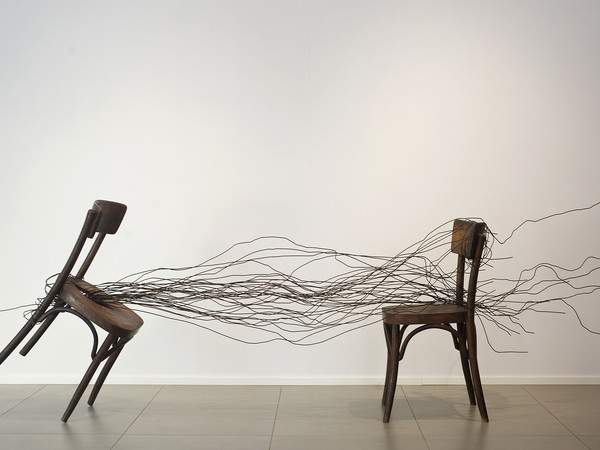In the centennial year of his birth, four artists pay tribute to the great intellectual in the exhibition Golpe. I Know. Dedicated to Pier Paolo Pasolini curated by Massimo Mattioli. The exhibition is set up in the evocative spaces of Pergola’s Museo dei Bronzi Dorati, in the 14th-century former convent of San Giacomo. Offering new looks at the poet and his work are artists Elena Bellantoni, Davide Dormino, Rocco Dubbini, and Giovanni Gaggia. The exhibition is on view until March 5, 2023.
Pasolini has seen in recent months a nation admire his art and personality celebrated through exhibitions and events throughout Italy. What remains a field yet to be explored in its complexity is the influence his libertarian and emancipated approach had on the generations of creatives who were nourished by it. This is what the exhibition Golpe. I Know. Dedicated to Pier Paolo Pasolini, which identifies decisive signals in the work of four Italian artists active in different expressive mediums.
A pivotal element of Pasolini’s lesson is the yearning for and convinced practice of FREEDOM, experienced by the writer and journalist as an inescapable element of existence, to be defended even at the cost of cultural and political ostracism, of obstacles placed in the way of the circulation and acceptance of his ideas and works, up to personal suffering and death.
The very title of the project, conceived by artists Giovanni Gaggia and Rocco Dubbini and curated by Massimo Mattioli, takes its cue from a famous article by Pasolini published in the Corriere della Sera, in which he tore the veils of hypocrisy on certain truths hidden behind dramas that marked Italian history in the difficult 1970s. With this he claimed his own incompressible freedom as an intellectual, but at the same time antagonized a large part of public opinion and national political spheres. And “Golpe” is also the title of the work that in some ways sums up the profound sense of the exhibition project, created by Dubbini and Gaggia in four hands, who in this tribute evoke the role of the Navy, which according to many thinkers became a libertarian emblem by denying its support to the Borghese Golpe.
Independence of judgment returns in all the works on display, often as a direct homage to Pier Paolo Pasolini. As in the photograph Le ceneri di Gramsci, by Elena Bellantoni, in which the artist identifies herself as Pasolini himself, dressing in his shoes and-where possible-taking on his likeness to recreate the scenario of her homage to the grave of the great communist philosopher and thinker. Or as in the installation Le sedie del biondo Tevere (The Chairs of the Blond Tiber), by Davide Dormino, who recovers the original chairs that welcomed Pasolini’s last supper in the Roman trattoria Biondo Tevere on the evening he was killed.
Articulated is Gaggia’s presence in the exhibition, with works ranging from a series of pictorial interpretations of the intellectual’s face to a series of embroideries, his personal testimony of resistance to institutional “censorship” and compressed freedom. And so is Dubbini’s, which among other things recalls Pasolini’s close bond with his mother in the profound installation Mantra.
The exhibition, already presented in November in Rimini at Galleria Zamagni, is accompanied by the NFC editions catalog, with texts by curator Massimo Mattioli.
The Museo dei Bronzi Dorati is housed in the 14th-century former convent of San Giacomo and collects works of significant historical and artistic interest from the territory of the municipality. The four sections that make up the museum center around the cloister in a sort of circular path. Inaugurated on October 9, 1999, the museum houses the Bronzi Dorati, the only group of gilded bronze that has come down from the Roman age to the present day. The archaeological section is completed with polychrome mosaics and grave goods from Roman times found in the area.
For all information, you can call +39 0721 734090 or email museo.bronzidorati@libero.it.
Pictured: Davide Dormino, The Chairs of the Blond Tiber (2013; chairs and iron). Photo by Alessandro Giampaoli
 |
| Pergola, at the Museum of the Golden Bronzes four artists pay tribute to Pier Paolo Pasolini |
Warning: the translation into English of the original Italian article was created using automatic tools. We undertake to review all articles, but we do not guarantee the total absence of inaccuracies in the translation due to the program. You can find the original by clicking on the ITA button. If you find any mistake,please contact us.